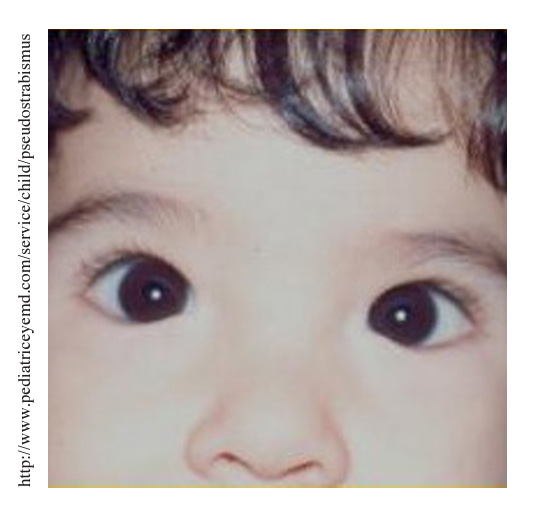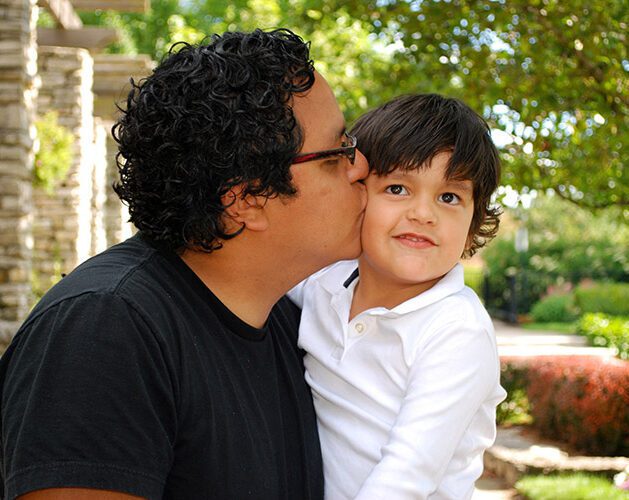About Amblyopia
Amblyopia is reduced vision in an eye that has not received adequate use during early childhood.
What makes an eye lazy? (What causes Amblyopia?)

Amblyopia, also known as “lazy eye,” has many causes. Most often it results from either a misalignment of a child’s eyes, such as crossed eyes, or a difference in image quality between the two eyes (one eye focusing better than the other.)
In both cases, one eye becomes stronger, suppressing the image of the other eye. If this condition persists, the weaker eye may becomes useless.
Can anything be done to treat amblyopia and prevent vision loss?
With early diagnosis and treatment, the sight in the “lazy eye” can be restored.
When should treatment for amblyopia begin?
The earlier the treatment, the better the opportunity to reverse the vision loss.
What treatments are available?
Before treating amblyopia, it may be necessary to first treat the underlying cause.
Glasses are commonly prescribed to improve focusing or misalignment of the eyes.
Surgery may be performed on the eye muscles to straighten the eyes if non-surgical means are unsuccessful. Surgery can help in the treatment of amblyopia by allowing the eyes to work together better.
Eye exercises may be recommended either before or after surgery to correct faulty visual habits associated with strabismus and to teach comfortable use of the eyes.
What treatment follows the correction of the underlying cause?
The correction may be followed by:
Patching or covering one eye may be required for a period of time ranging from a few weeks to as long as a year. The better-seeing eye is patched, forcing the “lazy” one to work, thereby strengthening its vision.
Medication in the form of eye drops or ointment—may be used to blur the vision of the good eye in order to force the weaker one to work. This is generally a less successful approach.
Other: A treatment prescribed by an eye doctor using software on a virtual reality (VR) headset. It has been approved by the FDA for binocular (using both eyes) therapy for amblyopia.
What happens if amblyopia goes untreated?
If not treated early enough, an amblyopic eye may never develop good vision and may even become functionally blind.
How many people have amblyopia?
It is estimated that two to three percent of the general population suffers from this form of visual impairment.
Tips and hints for amblyopia treatment
Learn how to make the most of your child’s amblyopia treatment.
Strabismus
Strabismus is a deviation of the eyes. The term is used to describe eyes that are not straight or properly aligned.
Make Patch Time Count
Encourage activities that make your child rely on sight, and other tips.
Tips for Patch Compliance
Signs of possible eye problems in children
If one or more of these signs appear, take your child to an eye doctor right away.
¿Qué es el ojo perezoso?
EL OJO PEREZOSO O LA AMBLIOPÍA ES LA PÉRDIDA DE LA VISIÓN EN LOS OJOS QUE NO SE CORRIGE CON ANTEOJOS. ES UNA AFECCIÓN QUE COMIENZA EN LA NIÑEZ. MÁS DE UNO DE CADA 50 NIÑOS TIENE AMBLIOPÍA. SI NO SE TRATA, PUEDE CAUSAR PÉRDIDA DE LA VISIÓN DE POR VIDA EN EL OJO CON PROBLEMAS. LA AMBLIOPÍA TIENE DIVERSAS CAUSAS. LA MAYORÍA DE LAS VECES, SE PRODUCE CUANDO UN NIÑO TIENE BIZQUERA U OJOS QUE NO SE ALINEAN. UN OJO QUE ENFOCA MEJOR QUE EL OTRO TAMBIÉN PUEDE CAUSAR AMBLIOPÍA. UNO DE CADA 20 NIÑOS EN EDAD PREESCOLAR TIENE UN PROBLEMA EN EL OJO QUE PODRÍA CAUSAR AMBLIOPÍA. EN AMBOS CASOS, UN OJO SE VUELVE MÁS FUERTE. EL OJO FUERTE SE ENCARGA MÁS DE VER MIENTRAS QUE EL OJO DÉBIL SE USA MENOS. SI EL PROBLEMA NO SE TRATA, EL OJO DÉBIL PODRÁ VER CADA VEZ MENOS Y LA VISIÓN EMPEORA. DETECTAR Y TRATAR EL PROBLEMA A TIEMPO PUEDE RECUPERAR LA VISTA EN EL OJO PEREZOSO.
USTED PUEDE PROTEGER A SU HIJO CONTRA LA PÉRDIDA DE LA VISIÓN CAUSADA POR LA AMBLIOPÍA SI:
- Busca signos de ojo perezoso.
- Hace controlar la visión de su hijo de un ojo por vez.
¿Cuáles son los signos del ojo perezoso?
Muchos problemas diferentes pueden causar el ojo perezoso. A continuación se incluyen algunos signos de problemas en los ojos que podrían estar relacionados con el ojo perezoso u otros problemas en los ojos:
- Favorecer un ojo.
- Inclinar la cabeza.
- Un ojo se desvía o tiene mirada errante cuando el niño está cansado, enfermo o en una luz brillante.
- Su hijo tiende a cerrar un ojo, especialmente en la luz solar.
- Frotarse los ojos.
- Su hijo parece parpadear demasiado.
- Su hijo sostiene las cosas cerca de sus ojos.
Si usted nota éstos u otros signos de problemas en los ojos, lleve a su hijo a un médico oftalmólogo de inmediato. Algunos niños con problemas en los ojos pueden no mostrar signos de estos problemas.
